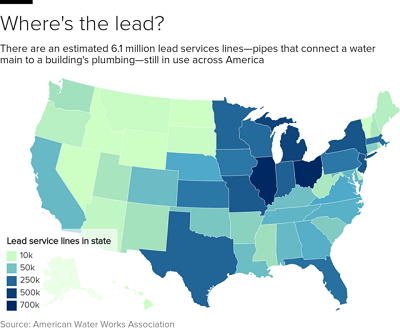If there is one thing that most of the United States can agree on, it is that investing in American infrastructure is long overdue. Earlier this month, the Biden administration released the initial proposal for a two trillion dollar American Jobs Plan that would provide substantial increases in funding for a wide range of projects and programs. The president then expanded this plan even further during a speech to a joint session of Congress, adding provisions for family and childcare reform as well. In theory, the plan is designed to be revenue neutral after ten years by slightly rolling back the previous administration’s corporate tax cuts. In practice, such investments could provide even greater returns as these spending programs will directly impact commercial success across the country. This still has to be written and passed through Congress, but the final version could start taking shape in the coming weeks. So what’s in it for rural America? This week, we’ll take a look inwards at what the Biden infrastructure plan could mean for rural America.
It’s finally infrastructure week!
Broadband Internet For All
One of the biggest proposals in this plan is to provide high-speed broadband internet access to every community in the nation. Right now, roughly one third of Americans do not have a reliable broadband internet access. Since so many critical aspects of daily life are starting to shift online, internet access is quickly moving from a luxury service to an essential utility. This is an especially difficult problem in rural communities where internet service providers typically don’t invest large amounts of money to reach a small number of remote customers. This plan would seek to equalize this problem by providing $100 billion to install new broadband service including fiber optic cables. This would have the added benefit of “future-proofing” this internet infrastructure since fiber optic internet cables are among the leading technologies of the industry.
In addition to solving rural internet equity problems, this would also provide significant benefits to American farmers. Farm implements are becoming more and more high-tech each year. Today’s tillers, watering systems, and combines often operate on a data-heavy series of metrics that require GPS navigation and constant internet connectivity. These broadband internet improvements can help American farmers retain their competitive edge in the global marketplace and reduce costs for small family farms.
Roads, Bridges, & No Lead Pipes
When you think of infrastructure, you probably think of steel, concrete, and tangible things like roads and bridges. The Biden infrastructure plan has committed hundreds of billions of dollars to those improvements too. The plan specifically calls for modernization of nearly 20,000 miles of highway including the ten most economically significant bridges in the country. Another 10,000 smaller bridges and thousands of miles of inland waterways would also receive a dramatic overhaul. Those that are designated for likely repair include thousands of miles of roads and bridges in rural areas of the country. These include critical links in the corn and soybean supply chain, which have suffered from congestion and road closure delays for years.
Another major proposal is the complete elimination of lead water pipes from America’s water supply. Under normal circumstances, lead pipes usually deliver safe drinking water. But as incidents like the water contamination crisis in Flint, Michigan have shown, accidents and decades of neglect can quickly create water scarcity problems. Lead water pipes are particularly prevalent in rural communities, so this plan calls for $45 billion to help water utilities replace any remaining lead pipes throughout their systems.
The Clean Energy Economy
Finally, another major piece of the infrastructure plan is nearly $200 billion to help transition the United States to more environmental methods of power generation and consumption. This includes funding for climate-related research, building energy-efficient schools, and the production of electric vehicles (with tax breaks for those who purchase them). In addition, the plan would create 500,000 charging stations to help lay the groundwork to make electric vehicle transportation more feasible throughout the country. Of course, electric vehicles are only as clean and reliable as the electricity they consume, which is why the plan also calls for significant investments in strengthening the grid and connecting more renewable sources to it.
As we’ve written before, clean energy can provide significant benefits to rural communities that are willing to make these investments. As fossil fuels become more scarce and renewable sources become even cheaper, these communities have an incentive to shift some of their energy production to a more sustainable source. However, rural communities know all too well that such shifts can have major impacts on local jobs. To help combat this, the Biden plan calls for $40 billion on job retraining programs for Americans who lose their jobs from these changes. As other global energy producers look to gain a foothold in the renewable energy marketplace, these investments are intended to help America keep its competitive edge.
Overall, it’s a big bill. We haven’t even covered some of the other proposals that are less directly infrastructure related such as a $400 billion investment in senior care. Though the price tag may seem shocking, the United States has consistently made cuts to infrastructure for decades, meaning that such investments are long overdue. Any plan that passes Congress will be a welcome change of pace. And one that benefits America’s rural communities will ensure that our economy uplifts all individuals in an equitable way.





